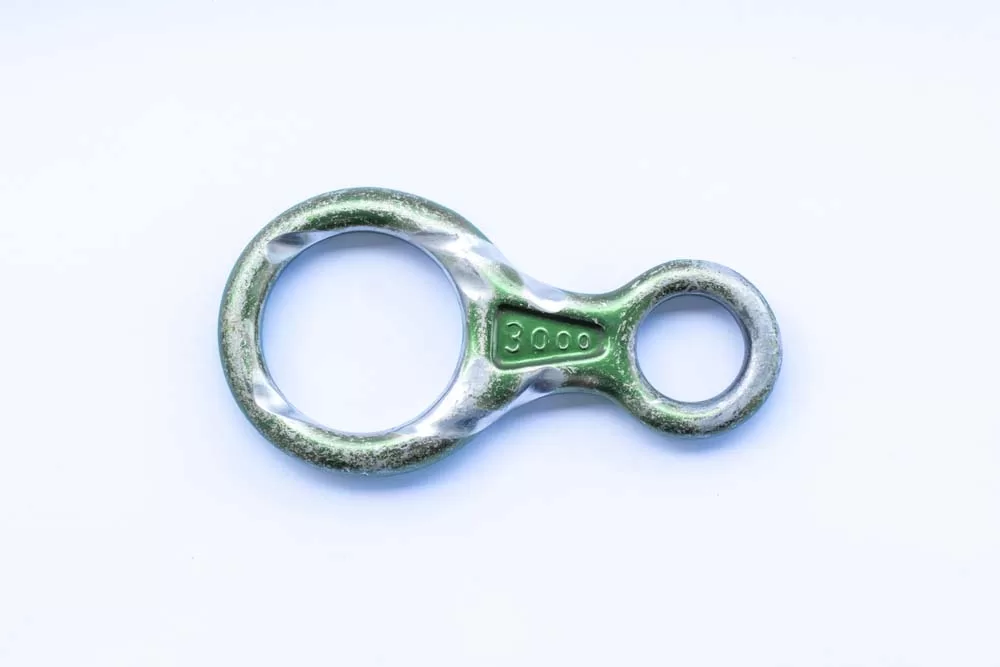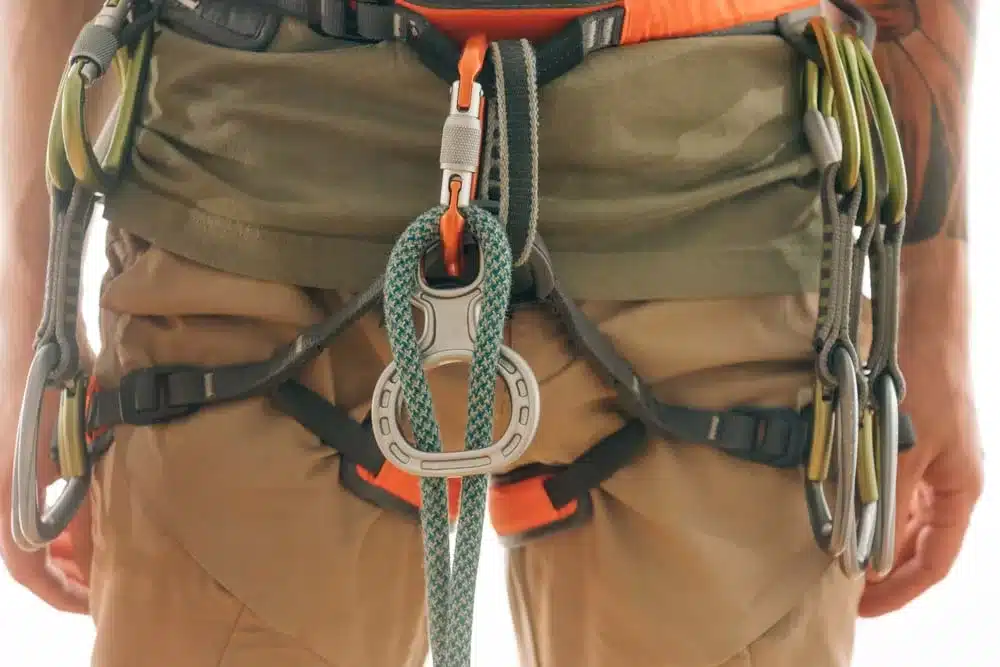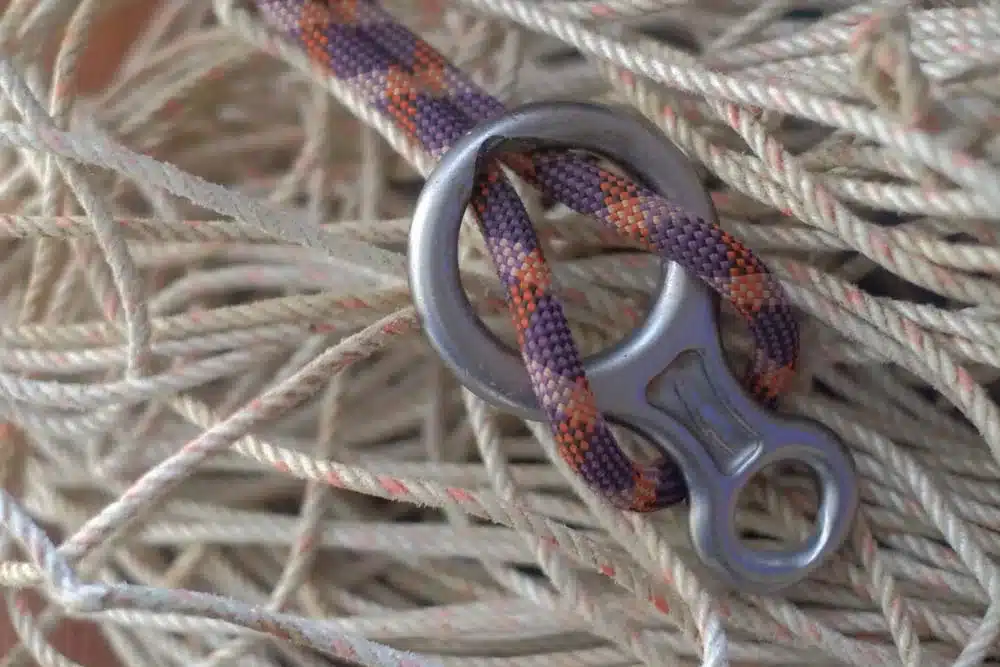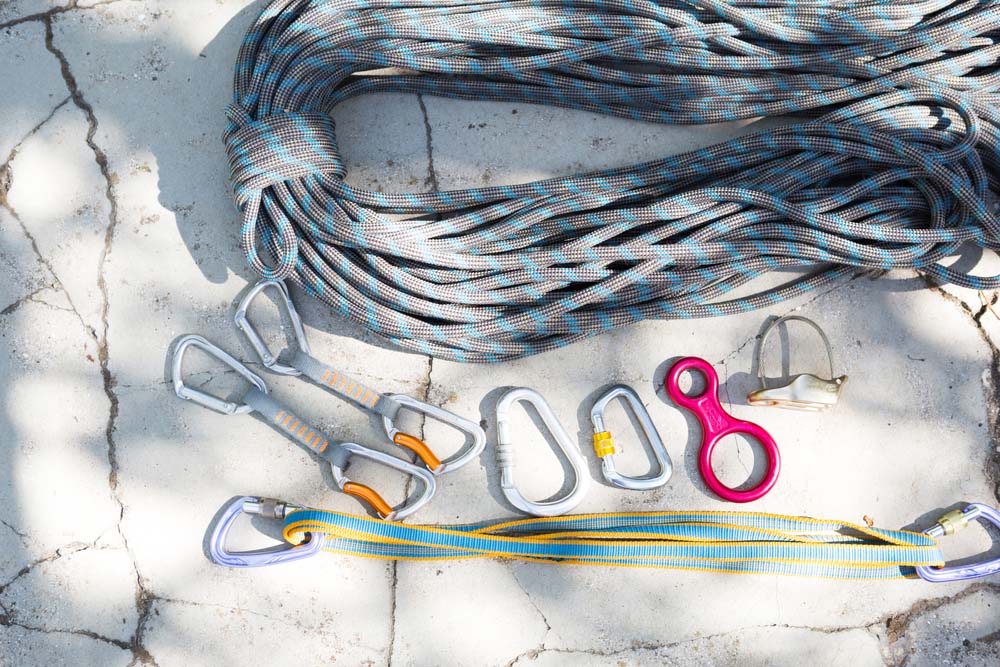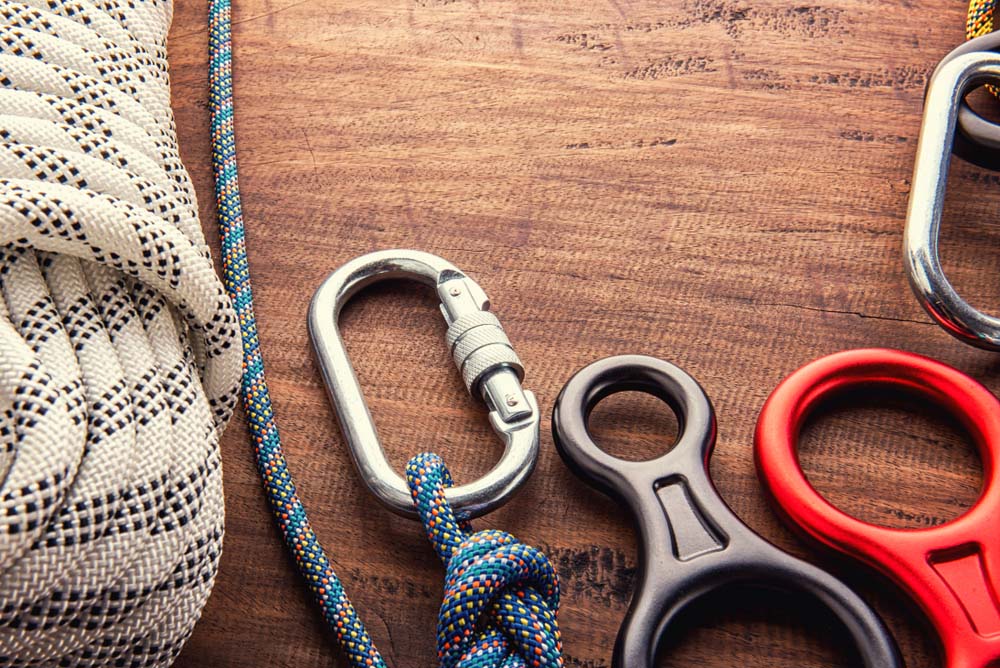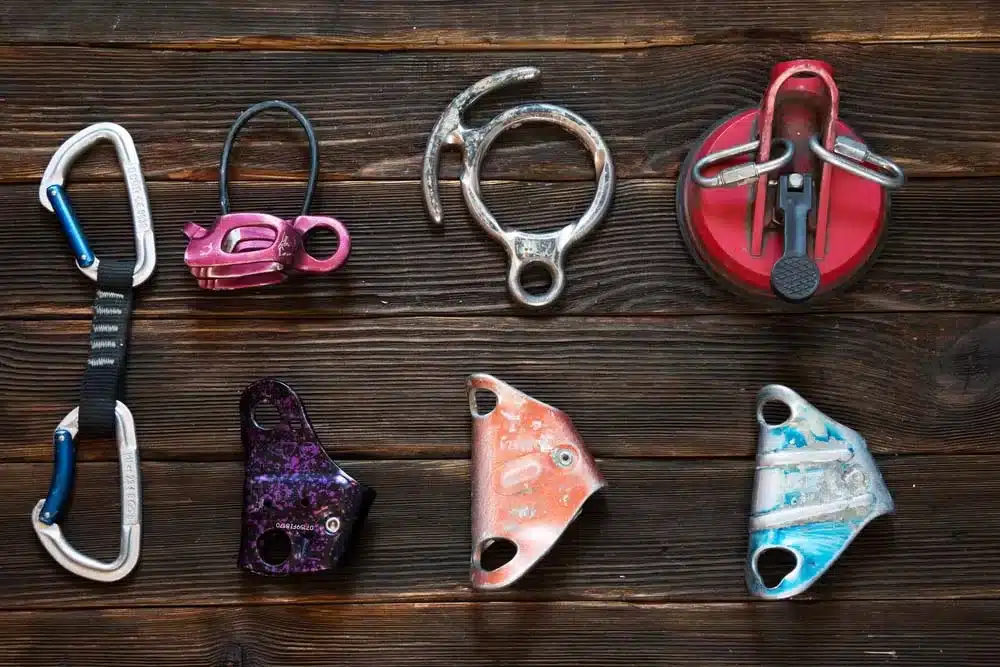The figure-8 has been a tool utilized in climbing for well over 50 years. As a result, most climbing hardware manufacturers have designed at least one model at some point in time.
In its heyday, the figure-8 was one of the most utilized belay and rappel device. Over the years, it stood the test of time because of its simplicity and versatility. However, since then, modern rock climbers have largely moved away from using it for opted for more modern devices which generate more friction.
Nonetheless, it is iconic and worthy of a conversation. So lets take a look at its origins, pros and cons, and some of it’s most important applications.
The Original Figure-8 Descender
Dr. Max Pfrimmer first invented the figure-8 device in October of 1943. He was a mountain troopers medical physician during World War II. At the time, Pfrimmer primarily wanted to create a tool for lowering.
It wasn’t until the 1950s that he thought his piece of equipment could be used for rappelling. After finishing his design, Pfrimmer offered his product to a local sporting goods store, where they first began manufacturing and selling the first figure-8 device to the climbing community for rappelling.
Since then, the overall design of the device has remained relatively the same, although the materials used to make them have improved. In addition, there have been some specialised iterations invented for niche operations like search and rescue and canyoneering.
The Figure-8 and Rappelling
Early on, the primary function of the figure-8 device was as a rappel device.
When properly rigged, the user can control the speed of their descent by modulating the tension they apply with the hand holding the brake strand. Depending on the different climbing rope diameters, this can provide sufficient friction to create a smooth controlled descent.
How to Rig the Figure-8 in its Standard Rappelling Configuration
- Remove figure-8 from the locking carabiner.
- Pass a bight of rope through the big hole.
- Pull the bight over the small hole of the figure-8 and allow it to settle into the shank of the device.
- Clip a locking carabiner into the small hold of the device.
- Attach the locker to the belay loop of a harness and lock it.
- Proceed to rappel.
The Figure-8 and Belaying
Later, it’s usage was expanded to top rope belaying and lead belaying. The top rope belaying configuration is called sport mode. In this configuration, a climber can use the figure-8 belay device as a means for belaying and lowering in a rope setting.
How to Rig the Figure-8 in Sport Mode for Top Roping
- Pass a bight of climbing rope through the big hole of the figure-8.
- With a locking carabiner, clip both the bight of rope and the small hole of the figure-8.
- Attach the locking carabiner to the below loop of a harness and lock it.
- Pass a bight of climbing rope through the small hole of the figure-8 belay device.
- Clip a locking carabiner through the bight of rope.
- Attach the locker to the belay loop of a harness and lock it.
Different Configurations of the Figure-8 Belay Device
One of the main advantages of the figure-8 device is that it can applied in a variety of contexts, such as using it with double ropes. Remember– although they look similar, each configuration is subtly different. They require proper technique and practice and safety checks to ensure it is properly rigged.
-
Figure-4 Wrap: This is the same as the standard configuration except that the brake strand is passed through the locking carabiner to create additional friction. The additional friction can be helpful for belaying a heavier climber in a top rope setting or gaining more control while rappelling.
-
Rescue Mode: This is the same as the standard configuration except that an extra bight is passed through the big hole to create extra friction for extremely heavy loads in a rescue scenario.
-
Canyon Mode: This configuration is used in the canyoneering setting where it may be difficult to attach or remove the figure-8 from the locking carabiner because its cold, wet, dark, or the device is underwater.
-
Auto Stop Mode: This configuration is similar to canyon mode except that you put a deliberate twist in the bight before passing it over the small hole. The twist makes the load strand of the rope pinch against the brake strand resulting in extra braking power. To free the pinch, the user must pull down on the small hole of the figure-8, similar to operating the lever on an assisted braking device.
Pros and Cons of the Figure-8
Whether or not the figure-8 is ideal for you will depend on your intended application. Here are some pros and cons to consider whether you’ll use it as a belay device or for lowering climbers.
|
Pros |
Cons |
|
Figure-8 devices are very affordable |
They have the particular problem twisting the rope |
|
They offer a very smooth descent |
They provide no means of temporarily locking |
|
Figure-8 devices can be used with any rope diameters or doubled rope |
They can be accidentally dropped during the rigging process |
|
They dissipate heat efficiently in comparison to many descending devices |
There are no convenient means to temporarily lock a rappel or belay. |
|
Generates less friction than more modern devices |
Final Thoughts about the Figure-8 Rappel and Belay Device
Back in the day, the figure-8 device was one of the most utilized rappel and belay devices. It’s simple and durable design along with its ease of function made it a popular device for many types of rock climbing applications.
However, over the years other friction devices were developed leading to it being replaced by more modern rappelling and belaying devices. Non-mechanical devices, tube-style devices, like the Black Diamon ATC, have replaced the figure-8 because they are smaller, lighter weight, and offer better performance on skinnier rope diameters.
Furthermore, mechanical devices and assisted braking devices, like the Petzl Grigri, have taken the belaying and rappelling world by storm, further pushing the figure-8 device to the margins.
However, as a device strictly used for descending in rescue and canyoneering contexts, this device still serve an important function.
My Beta for Figure-8’s
If you are curious about a rappel and belay device for rock climbing, I recommend not choosing a figure-8. Instead, I’d recommend a tube-style device or, even better, some form of assisted braking device.
However, if you’re looking for a descending device for learning to rappel or your next canyoneering mission, the figure-8 device may be the perfect tool for the job.


